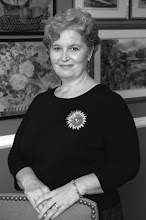
The DMRF is committed to advancing research and achieving our mission of identifying new and more effective treatments and ultimately a cure for all forms of dystonia. The Foundation has proudly supported most of the world’s leading dystonia researchers resulting in discovery of pieces of the dystonia puzzle. This past week, our understanding was again advanced with the publication of a study that was supported by the DMRF and the National Institute of Neurological Disorders & Stroke.
DMRF grant recipient Flavia Nery, PhD and longtime dystonia investigator Xandra Breakefield, PhD of Harvard’s Massachusetts General Hospital, and their collaborators have discovered a significant clue toward understanding why a mutation in the DYT1 gene might lead to dystonia. According to the paper published in the prestigious online journal, Nature Communications, torsinA is involved in eliminating misfolded proteins from a part of the cell called the endoplasmic reticulum. When mutant torsinA, which causes DYT1 dystonia, is present, it interferes with this process, making cells unusually vulnerable to cellular stress that may compromise neuronal function. This work demonstrates a cellular link between the disease-causing torsinA mutation and fundamental mechanisms of neuronal dysfunction that may ultimately lead to dystonia.
DMRF Science Officer Jan Teller, MA, PhD explains, “Essentially, all dystonia disorders are considered a neural circuits malfunction. Therefore finding any molecular or biochemical way to put these circuits back ‘in order’ would be beneficial to all dystonias. Understanding how this works in DYT1 dystonia may suddenly open up new possibilities for designing dystonia-specific treatments.” Current dystonia therapies such as botulinum neurotoxin injections and deep brain stimulation surgery suppress symptoms without altering or improving the course of the disease. A new generation of therapies that target dystonia at the cellular level would be revolutionary to the field and could provide relief to thousands of patients.





